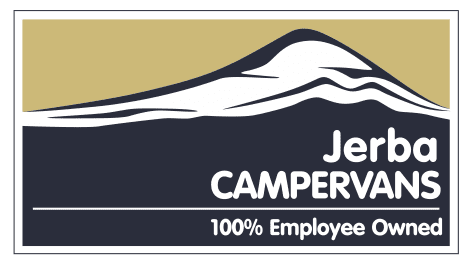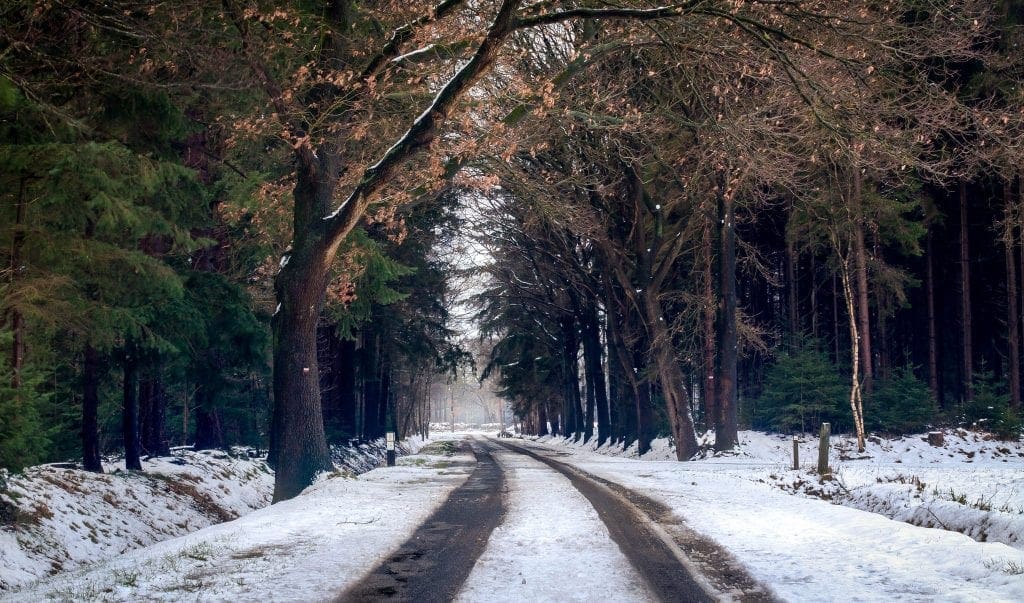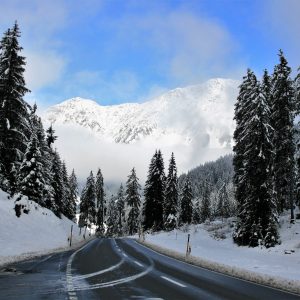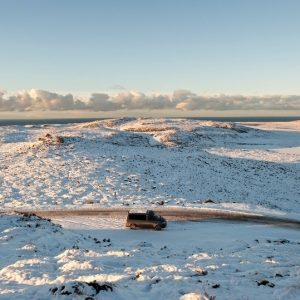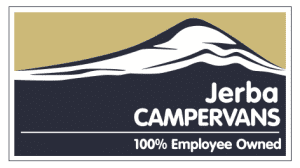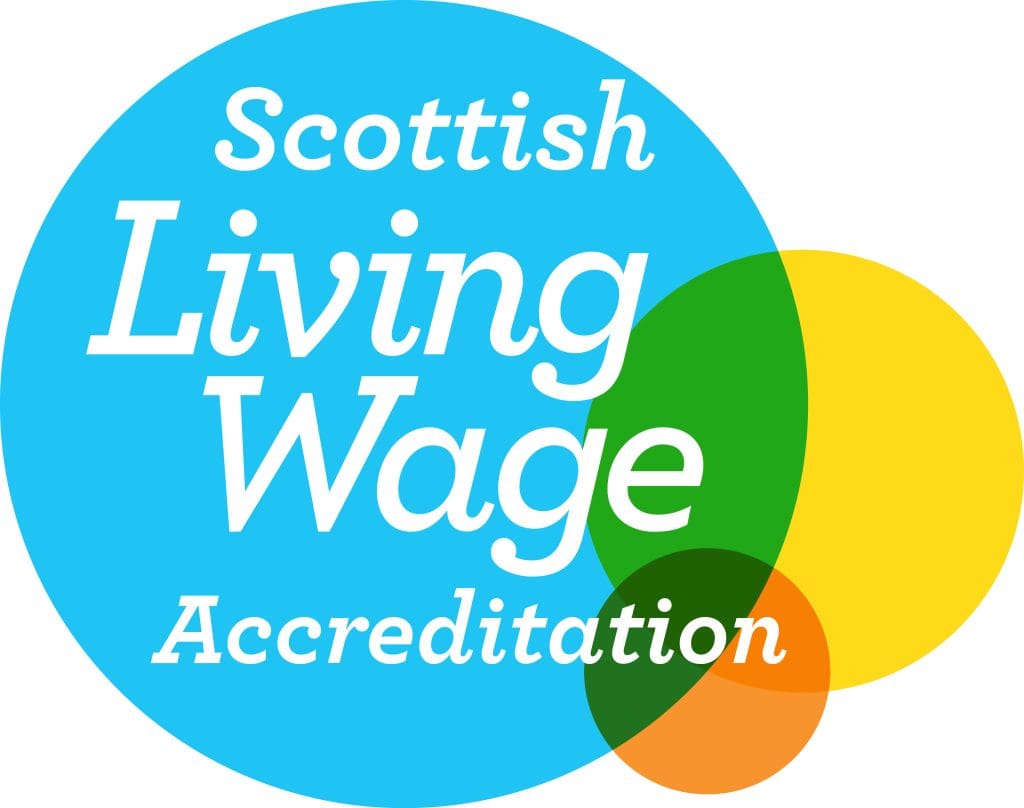These tips are useful for both long and short road trips and are not just applicable to driving your campervan – they can also be applied when driving your car in the winter.
1. Do your research
Before you get into your campervan, it’s always a good idea to check the weather forecast for your route, and the travel news so you know if there are any delays or if any roads on your journey have been closed or any diversions in place. When using journey planners give yourself extra time than the predicted journey time to avoid having to rush.
2. Check your tyre tread depth
Before going winter driving check your tyre pressure on your campervan before you set off as this will improve your grip on the road. The minimum legal requirement for tyre tread is 1.6mm. However, it is recommended for winter driving tread should be at least 3mm to give you maximum grip and decrease stopping distance.
3. Keep your fuel tank topped up
You may end up stuck in traffic due to road closures or having to take a longer route due to a diversion so make sure you start your journey with plenty of fuel and if need be top up along the way.
4. De-ice and clean your windscreen
Make sure your windows are clear giving you an unobstructed view of what is going on around you. It is good to keep de-icer and an ice scraper in your van so you can clear you windscreen and windows after parking up. Before you set off check that your washers are topped up with screenwash and that your wipers are in good condition – using good quality screenwash solution will make a big difference as it will be far less likely to freeze in your windscreen washer jets. Read the side of the container to chose the screenwash to water concentration you’ll need for the temperature conditions. This is important as roads tend to be very dirty during the winter months so you will need to regularly clean your windscreen while driving.
5. Keep your distance
Take your time and keep your distance from the vehicle in front. It is important to remember that stopping distances can be 10 times longer in snow and ice.
6. Use your gears to slow down
By going down your gears to slow down instead of your brakes you can keep in better control of your van and are less likely to skid.
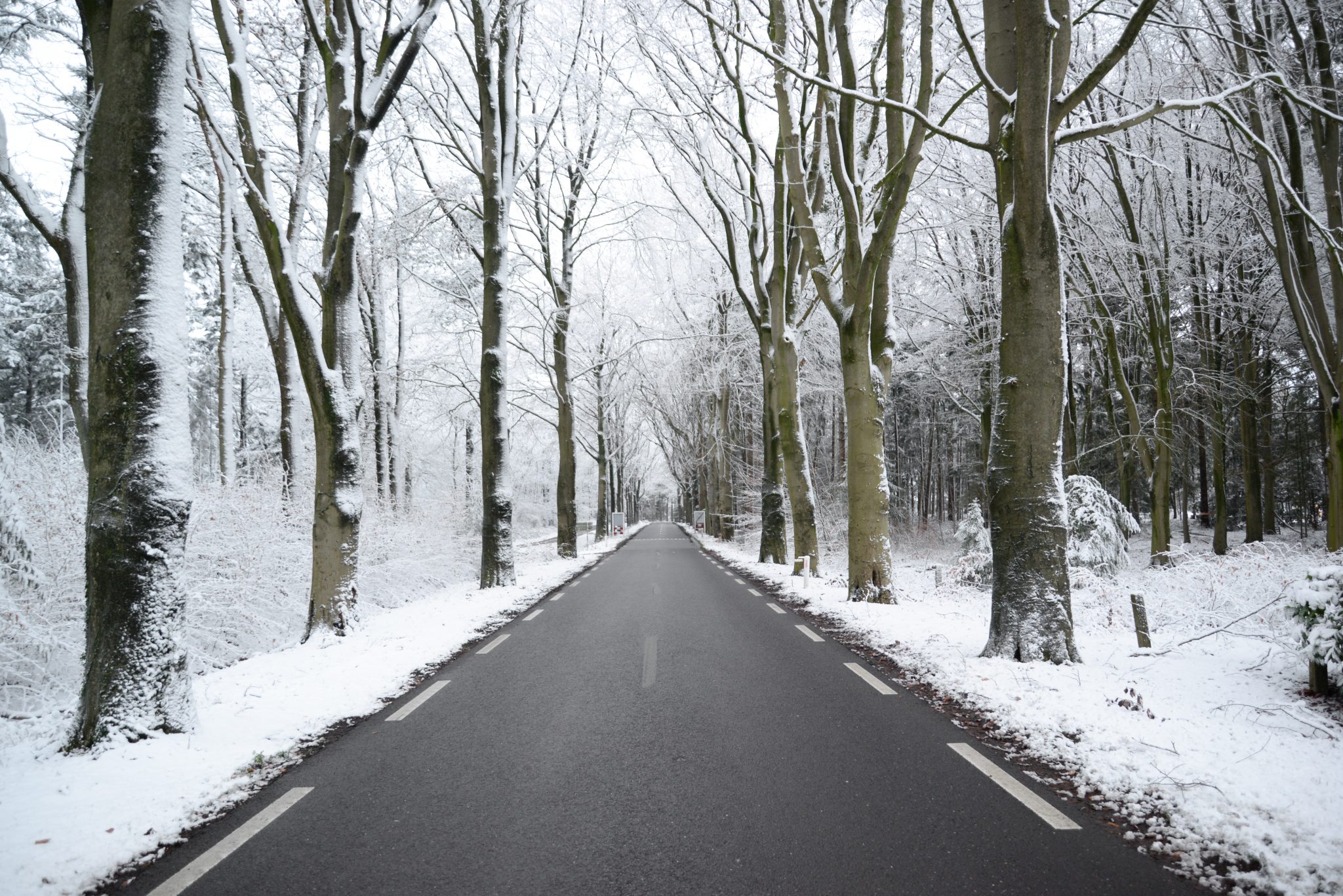
7. Take your time
Accelerate and decelerate slowly. Slowly accelerating is the best way to regain traction and avoid skids. Take your time to slow down by using the above advice of keeping your distance and using your gears.
8. Don’t use cruise control
When driving conditions are slippy due to rain, ice or snow you should avoid using cruise control. If your campervan aquaplanes or skids, your van will still try to maintain the speed, causing acceleration. By turning off your cruise control you have better control when driving in winter conditions
9. Don’t panic
If you do encounter a skid, steer gently into it and avoid erratic movements of the steering wheel. So, if the rear end of your camper is sliding to the left, gently steer to the left and keep both hands on the steering wheel.
10. Pack a winter breakdown kit
Just in case you experience an untimely breakdown keep a breakdown kit in your van. Here’s a list of things you may want to keep in your campervan during winter trips:
- Small Shovel
- Torch
- Ice scraper and de-icer
- first-aid kit
- jump-start cables
- warm clothes and blankets
- snacks and water

Photo’s – Edinburgh photo booth hire
